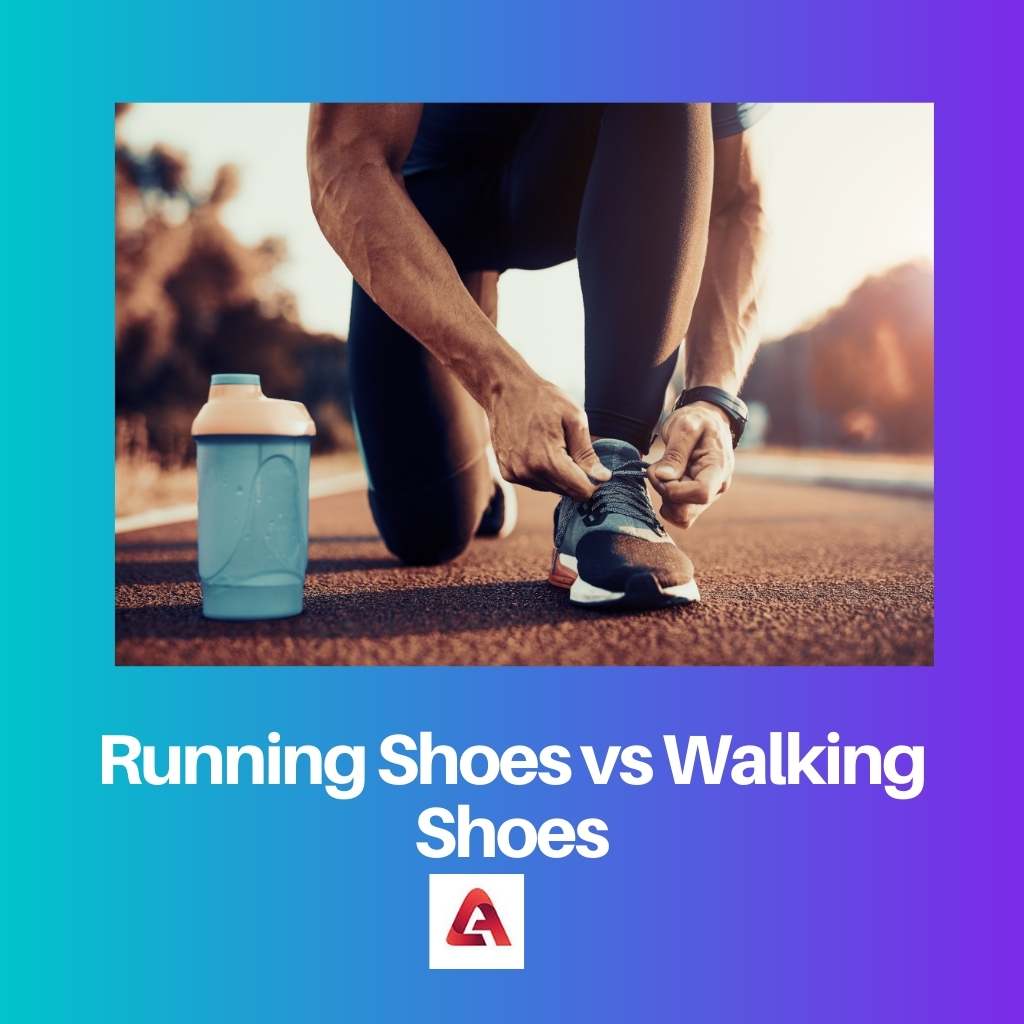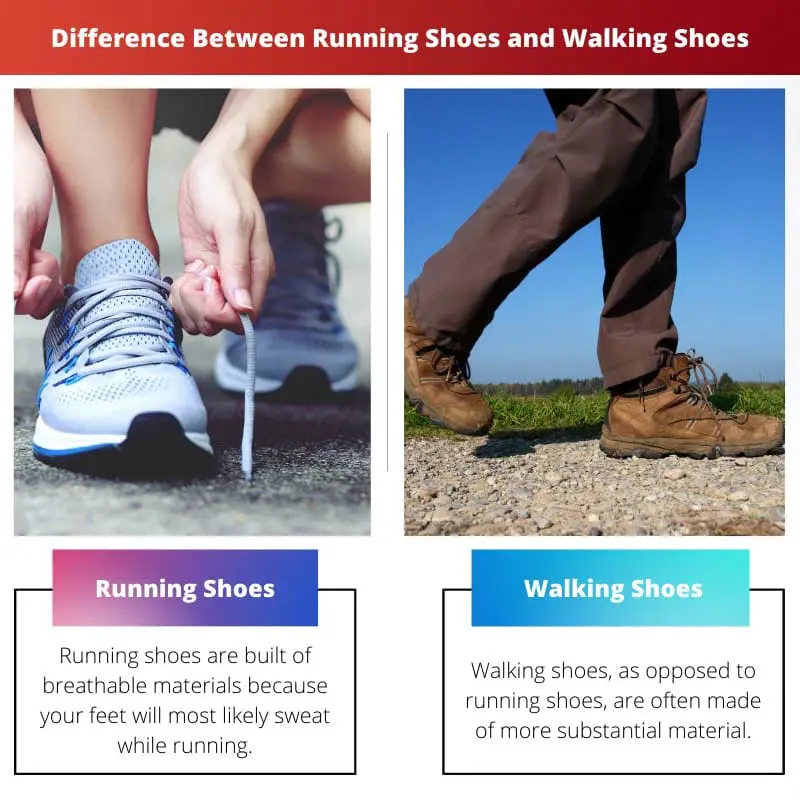Running and walking are two distinct activities with distinct foot movements. As a result, the shoes are tailored to the necessities of the foot to provide the user with optimum comfort along with protection.
It is fairly typical for people to classify both running and walking shoes as athletic shoes without recognizing the slight differences between them.
Walking and running shoes, on the other hand, have distinct characteristics to cater to the different needs of the activities.
Key Takeaways
- Running shoes provide more cushioning in the heel and forefoot to absorb the impact of running, while walking shoes have more even cushioning throughout.
- Running shoes are lighter and more flexible, while walking shoes prioritize stability and support.
- Walking shoes have a more rigid sole, while running shoes feature a more flexible sole to facilitate natural foot movement during runs.
Running Shoes vs Walking Shoes
Running shoes are designed to provide support and cushioning for the foot during high-impact activities such as running, and they have a thicker sole and more cushioning. Walking shoes are designed to provide support and cushioning for the foot during low-impact activities such as walking, and walking shoes have a more flexible sole.

Running shoes are built of breathable materials because your feet will most likely sweat while running. This also contributes to the shoe’s weight reduction.
Running shoes are built with structure around the heel to promote a secure fit with minimal movement as your feet bend and flex. This is known as the heel counter.
Walking shoes, as opposed to running shoes, are made of more substantial material. The heel of the walking shoes is tilted. This is done to keep the angle as the feet land on the ground.
These shoes are more flexible, allowing you to push harder during the toe-off phase. They are stiff in the front.
Comparison Table
| Parameters of Comparison | Running Shoes | Walking Shoes |
|---|---|---|
| Sole | Stiff sole | Flexible and bendable sole |
| Heels | Thick heel wedges | Beveled heels |
| Weight | Lightweight | Comparatively heavier |
| Motion Control | More motion controls | It provides less stability. |
| Cushioning | It has extra cushioning. | It does not have any extra cushioning. |
| Cost | It is more expensive. | It is cheaper. |
| Mesh | It has extra mesh. | It has no extra mesh. |
What are Running Shoes?
Running shoes are made to accommodate the running action and aid the feet in this activity. They contain a lot of cushioning, cushioning the foot and keeping the heel from hurting.
This additional padding increases the weight of the shoe. As a result, running shoes are heavier than walking shoes.
Extra mesh is also used in the design of these sneakers. The mesh in the shoe drains the extra heat created during strenuous exercise, keeping the feet cool. These shoes give the arch of the foot flexibility and stability.
They help control pronation, or inward rolling of the foot, by adding rigidity to the sole. Running shoes are primarily intended for forwarding motion. These shoes do not provide a lot of lateral support.
Running shoes are lighter than other types of footwear. Furthermore, they frequently have greater padding. Because running is an impact sport, runners’ feet frequently want an extra cushion to help protect their feet in contact.
Although runners strike the ground at different points on their feet, it is true that the impact of running requires more shock absorption than it does of other activities.
While your feet do strike the ground with each stride during walking, it is not with the same force as when running.
The toe box is another significant feature of running shoes. A solid fit in the toe box is essential to prevent movement in the front of the foot, which can lead to blisters.

What are Walking Shoes?
Walking shoes do not necessitate additional padding. Walking shoes, in fact, should be lighter. To do this, the excess padding is removed to create a lightweight shoe.
As a result, these shoes include additional shock absorbers to cushion the heel and ball of the foot. Shock absorbers protect the foot, ankle, and heels from injury.
Walking shoes are heavy and designed to be flexible through the ball of your foot. This is due to the fact that your foot will make touch with the ground throughout the whole flex of taking a step.
Walking shoes have a beveled heel to facilitate and comfort the heel striking. It aids in the stabilization of the foot and the support of the arch with each step.
Unless you run in a minimalist shoe, walking shoes will be more flexible than running shoes. That is if your running shoe has cushioning and control.
Walkers should opt for shoes with the smallest difference in height between the heel and the toe.
When it comes to walking shoes, the emphasis is on durability and support.
They provide cushioning, although not always to the same extent, and with a focus on the heel because this is where walkers first make contact with the ground with each step.

Main Differences Between Running Shoes and Walking Shoes
- Running shoes have stiffer soles, whereas walking shoes tend to have more of a flexible sole.
- Running shoes have thick heels edges that provide extra cushioning, whereas a walking shoe will have beveled heels.
- Running shoes offer more motion control to help keep the foot neutral while running. Walking shoes provide less stability.
- Running shoes are lightweight for more stealth, whereas walking shoes are comparatively heavier.
- A running shoe has extra cushioning, but a walking shoe has no such extra cushioning.
- Running shoes are more expensive than walking shoes which are more affordable.
- Running shoes have extra mesh, and walking shoes have no extra mesh.





